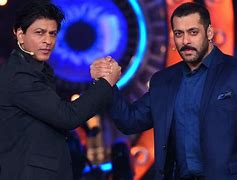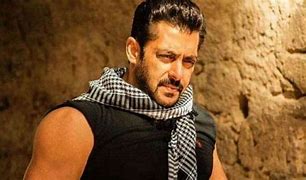Feature
Amjad Ali Khan, DJ Nucleya end Assamese fest

 Guwahati:Sarod maestro Amjad Ali Khan and Udyan Sagar aka DJ Nucleya brought down the curtain on the three-day Rongali — Destination, Culture, Harmony — a festival of Assam here.
Guwahati:Sarod maestro Amjad Ali Khan and Udyan Sagar aka DJ Nucleya brought down the curtain on the three-day Rongali — Destination, Culture, Harmony — a festival of Assam here.
The third day started on a powerful note with Nishant Hagjer passionately playing the drums. After his energetic performance, Amjad Ali Khan took the stage with his two tabla players — Shubh Maharaj and Satyajit Talwalkar.
Before starting off with a recital, the sarod expert, who is married to Subhalakshmi Barua Khan, said: “It’s an honour to be here.” He also hoped that more tourists visit the northeastern state.
Paying respect to the 13th century Sufi poet Amir Khusro, Amjad Ali Khan vocalised and played a tarana.
But what drew loud applause from the audience, which mostly consisted of localites, was when he said: “After my marriage in Assam, I learnt folk music. I will play a Bihu song and folk music from Bengal.”
The attendees, mostly youngsters who had come over to dance to the beats of DJ Nucleya, were left enchanted.
The last classical piece was with his two accomplished sons Amaan and Ayaan, who first touched his feet and then sat down next to him to create magic with their sarod.
Amidst performance, Amjad Ali Khan also stressed on the importance to stay connected to music. “Keep listening to music as it connects the whole world. It’s a precious gift of god.”
The Padam Vibhushan awardee, who was conferred an honorary doctorate last year by Kaziranga University in Assam for his contribution towards Indian culture and music, was also felicitated at the fest along with his family and the table players.
The star family then thanked the audience in Assamese.
This was followed by a presentation on Assam film industry, which began its voyage in 1935. George Baker and Binita Borgohain Mitra — the stars of 1975 Assamese drama film “Chameli Memsaab” took the stage and praised the film industry, which completed 80 years last year.
George, a member of the Central Board of Film Certification (CBFC), said that lately the censor board has been in news for various controversies, but he is glad that “not a single Assamese film had made a controversy. We have to keep going ahead”.
The second edition of the fest then focused on fashion with Assamese designers like Dhiraj Deka and Garima Saikia Garg showcasing their colourful creations.
“I will be showing eri knitted stoles and Assamese silk garments both for men and women,” Deka told IANS prior to his show that saw models in casuals, Mekhela Chadar (traditional costume of Assam) and bandi jackets with pants.
Going back to music, the “Barfi!” singer Papon was happy to perform in his home state again. Apart from some of his Assamese numbers, he made the crowd sway to his Bollywood hit songs like “Tu jo mila” and “Moh moh ke dhaage”, which he sang along with a female singer named Sharmishtha. He ended his performance with a Bihu song.
The city’s Sonaram field was filled with people enjoying his music and doing the Bihu dance.
Papon then gave way to DJ Nucleya, who performed in Assam for the first time on such a large scale. He was set to play in the afternoon, but the city’s music lovers’ eagerness to catch him live made the organisers push his performance to the end. That was certainly a wise call as the youngsters were more than eager to dance to EDM tracks.
“We don’t have EDM festivals as such. Assam is mostly about rock and folk music, so having DJ Nucleya here is a thrilling experience. Having him as the last act instead of Papon or Zubeen Garg was a good change,” said a 22-year-old, who reached the venue in the afternoon itself.
The DJ did not leave the crowd disappointed. With hands up in the air and feet moving to the fast-paced songs, the attendees surely had a good time. Some of them even got on stage to dance to songs like “Laung gawacha” and “Akkad bakkad”.
The visuals on the screen behind him encouraged the crowd to dance even more. There were visuals of Bollywood superstar Salman Khan doing the signature “Hudd hudd dabangg” moves, and also of comedy star Rowan Atkinson, famously known as “Mr. Bean”, shaking a leg.
His show went beyond midnight, still the crowd shouted: “Once more.”
With such a diverse line-up of artistes, the fest concluded on a musical note on Sunday.
Entertainment
Meghalaya Reserves Legalized Gambling and Sports Betting for Tourists

The State Scores Extra High on Gaming-Friendly Industry Index
Meghalaya scored 92.85 out of 100 possible points in a Gaming Industry Index and proved to be India’s most gaming-friendly state following its recent profound legislation changes over the field allowing land-based and online gaming, including games of chance, under a licensing regime.
The index by the UK India Business Council (UKIBC) uses a scale of 0 to 100 to measure the level of legalisation on gambling and betting achieved by a state based on the scores over a set of seven different games – lottery, horse racing, betting on sports, poker, rummy, casino and fantasy sports
Starting from February last year, Meghalaya became the third state in India’s northeast to legalise gambling and betting after Sikkim and Nagaland. After consultations with the UKIBC, the state proceeded with the adoption of the Meghalaya Regulation of Gaming Act, 2021 and the nullification of the Meghalaya Prevention of Gambling Act, 1970. Subsequently in December, the Meghalaya Regulation of Gaming Rules, 2021 were notified and came into force.
All for the Tourists
The move to legalise and license various forms of offline and online betting and gambling in Meghalaya is aimed at boosting tourism and creating jobs, and altogether raising taxation revenues for the northeastern state. At the same time, the opportunities to bet and gamble legally will be reserved only for tourists and visitors.
“We came out with a Gaming Act and subsequently framed the Regulation of Gaming Rules, 2021. The government will accordingly issue licenses to operate games of skill and chance, both online and offline,” said James P. K. Sangma, Meghalaya State Law and Taxation Minister speaking in the capital city of Shillong. “But the legalized gambling and gaming will only be for tourists and not residents of Meghalaya,” he continued.
To be allowed to play, tourists and people visiting the state for work or business purposes will have to prove their non-resident status by presenting appropriate documents, in a process similar to a bank KYC (Know Your Customer) procedure.
Meghalaya Reaches Out to a Vast Market
With 140 millions of people in India estimated to bet regularly on sports, and a total of 370 million desi bettors around prominent sporting events, as per data from one of the latest reports by Esse N Videri, Meghalaya is set to reach out and take a piece of a vast market.
Estimates on the financial value of India’s sports betting market, combined across all types of offline channels and online sports and cricket predictions and betting platforms, speak about amounts between $130 and $150 billion (roughly between ₹9.7 and ₹11.5 lakh crore).
Andhra Pradesh, Telangana and Delhi are shown to deliver the highest number of bettors and Meghalaya can count on substantial tourists flow from their betting circles. The sports betting communities of Karnataka, Maharashtra, Uttar Pradesh and Haryana are also not to be underestimated.
Among the sports, cricket is most popular, registering 68 percent of the total bet count analyzed by Esse N Videri. Football takes second position with 11 percent of the bets, followed by betting on FIFA at 7 percent and on eCricket at 5 percent. The last position in the Top 5 of popular sports for betting in India is taken by tennis with 3 percent of the bet count.
Local Citizens will Still have Their Teer Betting
Meghalaya residents will still be permitted to participate in teer betting over arrow-shooting results. Teer is a traditional method of gambling, somewhat similar to a lottery draw, and held under the rules of the Meghalaya Regulation of the Game of Arrow Shooting and the Sale of Teer Tickets Act, 2018.
Teer includes bettors wagering on the number of arrows that reach the target which is placed about 50 meters away from a team of 20 archers positioned in a semicircle.
The archers shoot volleys of arrows at the target for ten minutes, and players place their bets choosing a number between 0 and 99 trying to guess the last two digits of the number of arrows that successfully pierce the target.
If, for example, the number of hits is 256, anyone who has bet on 56 wins an amount eight times bigger than their wager.























